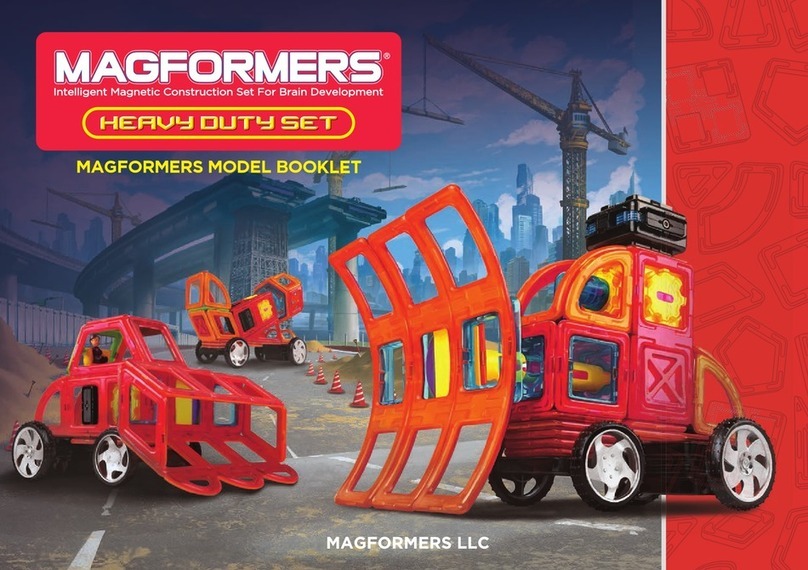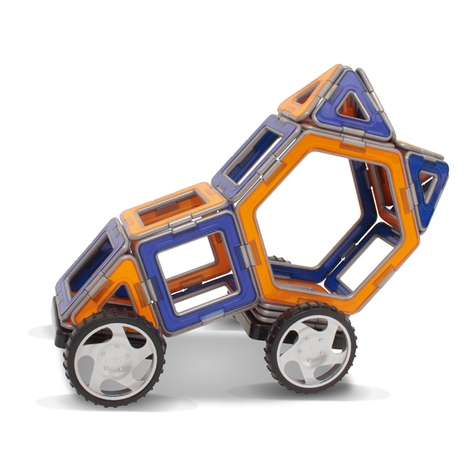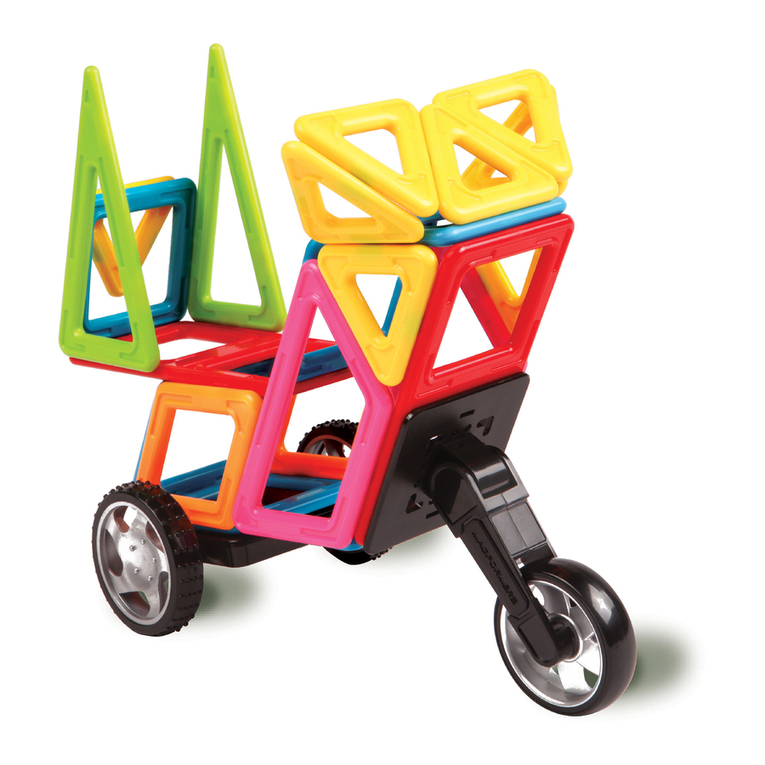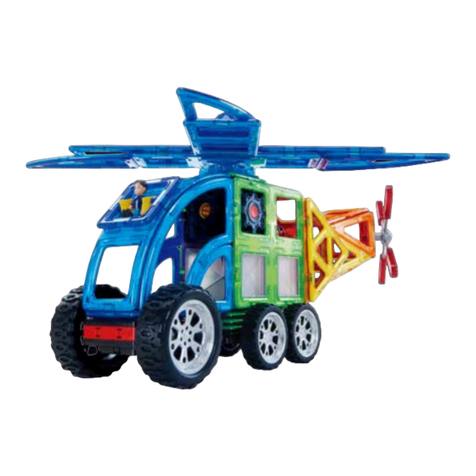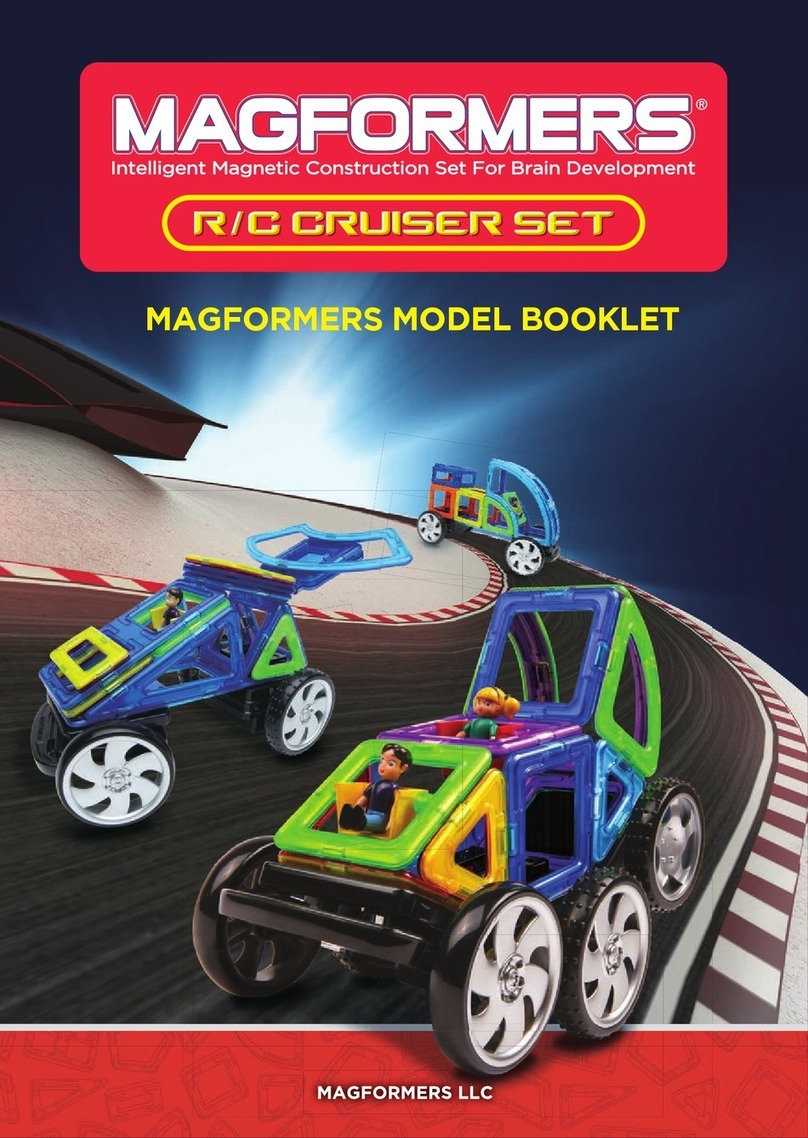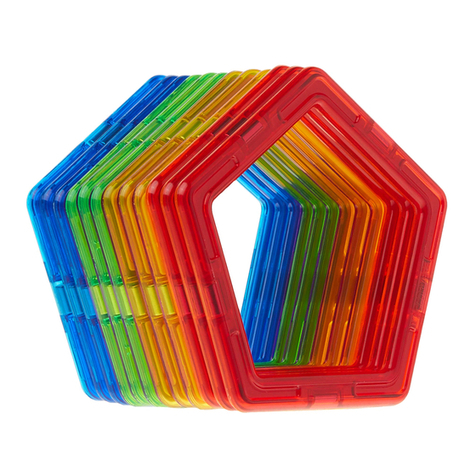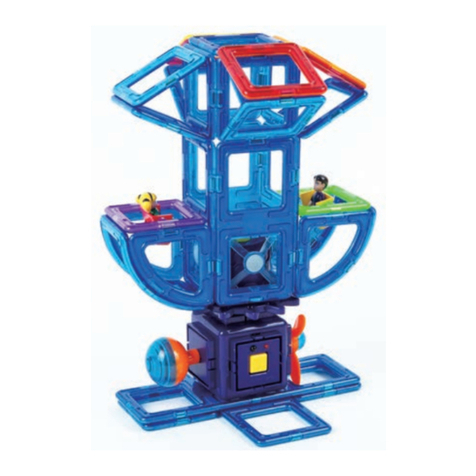
SUPER S.T.E.A.M
GUIDE BOOK
4
Educational Effects of
Magformers According to Age
A critical period that forms 80% of brain development. Through
various sensory stimulation activities and nger movements, the
brain and nervous system are developed.
Educational Effects
●Visual stimuli with the rich colors and shapes of Magformers
●Auditory stimuli with the clear sound of shapes attaching and detaching
●
Developing recognition of colored shapes and distinction of different colored shapes
●
Fostering coordination of eyes and hands while holding, attaching and
detaching Magformers
●
Developing gross and ne motor skills while moving arms, hands and ngers
A period when self-reliance and independence is developed,
which causes behavior based on accomplishment. The ability
to think and express themselves is developed, and creative and
unique play is possible.
Educational Effects
●
Learning the basis of mathematics such as parts and wholes, response and
patterns while combining Magformers and making models
●
Conception of geometric relationships and space by understanding shape and
size comparison, direction and location of right, left, top and bottom
●
Fostering creativity, problem solving skills, self-reliance and a sense of
accomplishment while planning and creating on their own
●Developing verbal expression while expressing planned and nished models
A period to passionately explore objects. While operating
surrounding objects, curiosity increases. Symbolic thinking is
developed, and imaginative and virtual play forms are displayed
overall.
Educational Effects
●Improving ability to operate objects by developing hand control
●
Fostering divergent thinking, imagination and creativity while making desired
shapes
●
Developing modeling capability while creating a form or shape, and understanding
symmetry, conguration, area and lines
A period that enables concrete thinking about objects and
specic reproduction regarding the surrounding world that they
experience. In this process, observation and analytical skills
relating to objects, and logical thinking are developed.
Educational Effects
●
Developing observation, analytical and thinking skills while reproducing various
surrounding objects
●
Developing spatial perception skills while shaping buildings or making 3D models
●
Developing reasoning, logic and thinking skills while predicting and representing
invisible form
●
Developing creative problem solving skills while making and combining complex
objects
●
Forming geometric concepts, acquiring mathematical knowledge and approaching
science with the principle of magnets
Sensitive 1-3 year-old
Sensorimotor Stage
Stubborn 5-7 year-old
Concrete
Operational Stage
Curious 3-5 year-old
Preoperational Stage
Expressive 7 year-old and older
Formal
Operational Stage
